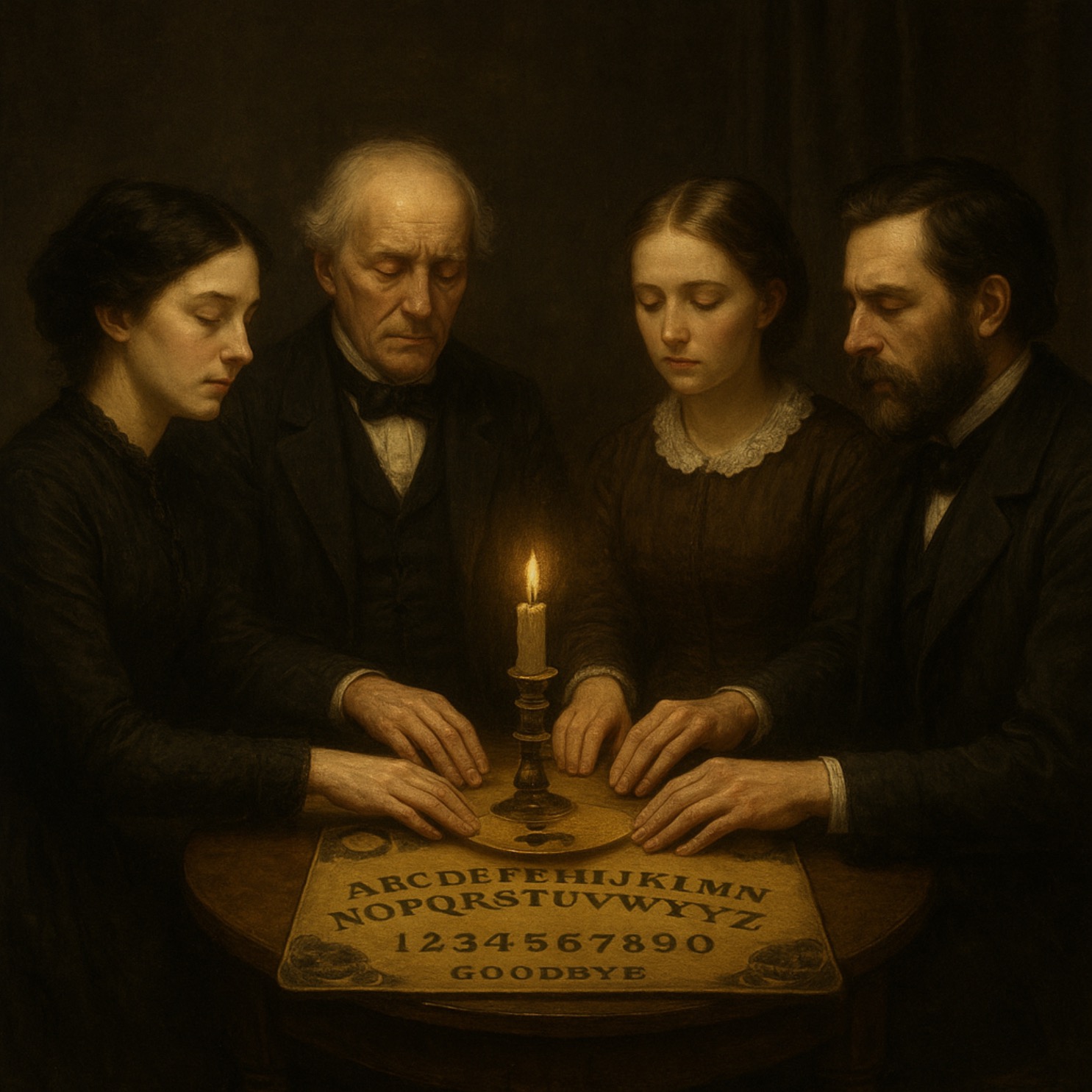

The Ouija board was born out of America’s deep desire to speak with the dead. In 1848, the Fox sisters of New York demonstrated how spirits could communicate through knocks and raps, and from there, Spiritualism swept across the nation. In an age of short life spans, disease, and the devastating losses of the Civil War, nearly every family sought contact with loved ones who had passed. Séances, automatic writing, and table-turning became common, and the belief that spirits guided the living was both widespread and respected.By the 1880s, Spiritualist camps in Ohio were already using early talking boards to communicate quickly with the spirit world. In 1890, Charles Kennard and his partners formed the Kennard Novelty Company to bring this device to the public. During a session, the board itself gave its name: “Ouija,” which it said meant “good luck.” The following year, the spirits proved their power at the U.S. Patent Office by correctly revealing the patent officer’s name — winning the Ouija its first patent on February 10, 1891.From that moment, the Ouija became a bridge between worlds, guiding millions of people through uncertain times. It has left its mark in extraordinary ways:Literary Voices from Beyond: In 1912, Pearl Curran began receiving poems and novels from the spirit of Patience Worth, a 17th-century woman whose works were hailed as masterpieces. Decades later, poet James Merrill used the Ouija to craft his monumental epic The Changing Light at Sandover.Life-Changing Guidance: In 1956, Helen Dow Peck left her fortune to a spirit named John Gale Forbes, who had first contacted her through the Ouija decades earlier. Countless others have made major life decisions — careers, marriages, journeys — on the counsel of voices from the board.Prophecy & Warning: William Fuld, who expanded Ouija production, built his largest factory after the board instructed him to “prepare for big business.” In 1927, he died in a tragic fall from that very building — a reminder of the board’s mysterious and sometimes fateful influence.The Ouija has always surged in times of crisis and cultural change: after World War I, during the Jazz Age, through World War II, and again during Vietnam. In 1967 alone, two million boards were sold, outselling even Monopoly. Families gathered around it not just for entertainment, but to seek guidance, reassurance, and connection to loved ones who linger just beyond the veil.More than 130 years after its creation, the Ouija board remains a powerful tool of spirit communication, one that continues to unite the known and the unknown, the living and the dead.Check out Zocdoc: https://zocdoc.com/HOLO1Check out Mood and use my code HOLO for a great deal: https://mood.comCheck out HelloFresh: https://hellofresh.com/HOLO1POD10FMFacebook and Twitter @holoskypodcastInstagram @ theholoskypodcast If you have an experience of your own you'd like to share with us please do. You can email us at holoskypodcast@gmail.com you can also use your voice memo app on your smart phone or anything that can record you and send it over to the email. If you have and experience you’d rather sit down and talk to us about please send that email to holoskyinterviews@gmail.com You can also call our podcast cell phone and leave a message or time it right and grab an on the spot interview. The number is going to be 1 (618) 556-0837 If you want to send us we
Episode Details
About This Episode
The Ouija board was born out of America’s deep desire to speak with the dead. In 1848, the Fox sisters of New York demonstrated how spirits could communicate through knocks and raps, and from there, Spiritualism swept across the nation. In an age of short life spans, disease, and the devastating losses of the Civil War, nearly every family sought contact with loved ones who had passed. Séances, automatic writing, and table-turning became common, and the belief that spirits guided the living was ...